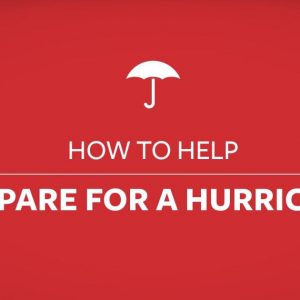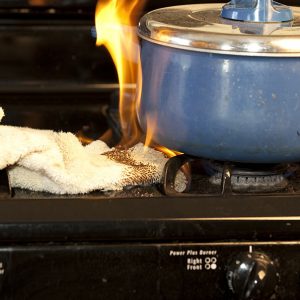The worst thing that coastal people can do is not prepare for tropical storms and hurricanes.
The two key factors contributing to weather security during hurricanes, according to the National Hurricane Center, are preparing for the risks in advance and acting on those preparations when alerted by emergency officials.
The director of the National Hurricane Center, Rick Knabb, and AccuWeather Hurricane Expert Dan Kottlowski outlined certain precautionary steps that people in areas impacted by hurricanes and tropical storms should take.
RELATED:
5 potentially dangerous hurricane preparation myths debunked
5 expert tips for protecting your home against hurricane damage
Essential items for your evacuation go bag
1. Evacuation planning
According to the National Hurricane Center, the main reason people have to evacuate during hurricanes is from a storm surge, an abnormal surge of water generated by the winds of a storm that can reach heights well over 20 feet and span hundreds of miles of coastlines.
“Evacuation planning is number one on the list,” Knabb said.
Knabb urged that people find out today if they live in a hurricane evacuation area, which is an area in which residents must leave their homes in the event of a hurricane.
Local governments provide the public with information about evacuation areas and the evacuation plans, and Knabb recommended that people review this information in advance.
“Some people will actually test the evacuation route in good weather,” Kottlowski said. “Waiting until the day of the hurricane isn’t a smart idea since everyone will be in a heightened state of anxiety.”
While people who live in storm surge areas fall within areas that are urged to evacuate during a hurricane, people who live outside of these zones should still look into safety precautions during a hurricane.

Hurricane Joaquin churns in the Atlantic in the fall of 2015. (Satellite Image/NOAA)
Those who live in mobile homes and high rises may also have to evacuate even if they do not live in an evacuation area, Knabb said.
“It’s not just a beachfront problem,” he added.
Pet owners should also have an evacuation plan for their pets. Many shelters offer places to keep pets.
2. Buy supplies
The most important thing that both Knabb and Kottlowski stressed was buying supplies well in advance and keeping those supplies on hand should evacuation be required.
“If you wait until the hurricane is on your doorsteps, you are going to be waiting in long lines and they could even be out of the stuff you need,” Knabb said.
Those living in evacuation areas should keep a hurricane kit handy that is stored in a way that is easy to grab and bring to an evacuation shelter.

A satellite image of Hurricane Sandy on Oct. 28, 2012. (Image/Earth Observatory/NASA)
While evacuation shelters do provide supplies, Kottlowski said, “Shelters can get overrun and may not have enough supplies.”
These kits should include water, food, blankets, and clothing.

Kottlowski said he recommends that residents have their kits bagged up in a suitcase or plastic tub.
3. Check insurance coverage
Property owners and renters should be sure to ensure their homes against flooding, something that Knabb said many people do not realize is not a part of standard home and renters insurance.
Tenants and homeowners can contact their renters or home insurance provider to buy flood insurance, and they should do so even if they do not live right along the coastline.
“People might think that if they don’t live on the coast, then they won’t have a flooding problem,” Knabb said. “But if it can rain, it can flood.”

Dimitri Pinckney installs hurricane shutters in advance of Hurricane Matthew on the Isle of Palms, S.C., Wednesday, Oct. 5, 2016. (AP Photo/Mic Smith)
Car owners should also contact auto insurance companies and move their cars into an off-site location or secured building.
“You won’t be able to take every vehicle you own to the shelter, but if you leave the vehicle outside, it could be seriously damaged,” Kottlowski said.
4. Make copies of important documents
Those living in or near hurricane areas should make copies of proof of ownership documents of any property not limited to their homes, cars and boats.
These documents can be stored in the hurricane kit or in any safe location that does not risk being damaged during the hurricane.
“If a hurricane levels your house, you have to prove that it is your house,” Kottlowski said.
5. Protect your home
Residents and tenants should inspect their homes to confirm that there is no damage that a hurricane could increase.
Any issues with the overall structure should be repaired, including loose shingles or damaged roofs.
“Any possible compromises to the roof or house will become an open avenue for strong and gusty winds,” Kottlowski said.
Residences with yards should also make a list of anything laying on the ground outside that could get tossed into the air and become debris during high winds.
Kottlowski also said residents should purchase supplies, including plywood to cover windows and extra security to keep doors from blowing open, in advance, to secure their homes from damaging winds.
6. Back up your electronics
Aside from keeping extra batteries and chargers around during a hurricane, people are also encouraged to back up any electronic devices.
Knabb said data should be stored at an off-site location so that data can be recovered if something were to happen to the physical computer or device during a hurricane.
Businesses should take particular caution in backing up information and sending that information to a remote site.
Source:
1 www.accuweather.com



